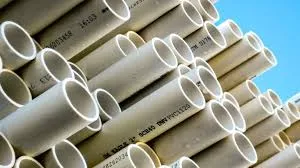Oct . 20, 2024 22:25 Back to list
High-Quality PPR Pipes from DN25 Manufacturer for Reliable Plumbing Solutions
Understanding DN25 PPR Factory A Comprehensive Overview
In the contemporary world of plumbing and piping systems, the use of Polypropylene Random Copolymer (PPR) has gained significant attention for its wide range of applications, particularly in residential and industrial settings. One of the vital dimensions in this context is DN25, which refers to a nominal diameter of 25 millimeters, indicating its size and compatibility with various piping systems. This article delves into the aspects of a DN25 PPR factory, focusing on its production processes, applications, benefits, and the growing market demand for such products.
What is PPR?
Polypropylene Random Copolymer (PPR) is a thermoplastic polymer used extensively in hot and cold water supply, including potable water systems and heating applications. Its chemical structure, characterized by random arrangements of polymer chains, provides excellent resistance to impact, heat, and pressure, making it a preferred choice for piping solutions.
The DN25 Specification
The DN in DN25 stands for Diameter Nominal, a specification that indicates the approximate internal diameter of the pipe. DN25 pipes typically have an external diameter slightly larger than 25 mm, making them suitable for a range of applications that require moderate flow rates. This size is particularly ideal for residential plumbing systems as it can handle the typical water demand without the bulkiness of larger pipes.
Production Process in a DN25 PPR Factory
The manufacturing process of DN25 PPR pipes involves several stages
1. Material Procurement High-quality polypropylene raw materials are sourced and tested to ensure compliance with industry standards. 2. Extrusion The raw polypropylene is heated to a melting point and then extruded through a die to form pipes of the desired dimensions. For DN25 pipes, precise control of temperature and pressure is essential to produce uniform diameter and wall thickness.
3. Cooling Once extruded, the pipes are cooled using water or air cooling systems to solidify the material and ensure dimensional stability.
4. Cutting and Length Adjustment After cooling, the pipes are cut to specified lengths, typically ranging from 4 to 6 meters, suitable for various construction and plumbing needs.
5. Quality Control Rigorous testing is performed to check for defects, ensuring that the pipes meet strength, durability, and safety standards. Tests may include pressure testing, dimensional checks, and visual inspections.
6. Packaging and Distribution Finally, the pipes are packaged appropriately for transport to wholesalers, retailers, or directly to construction sites, ensuring they arrive in pristine condition.
dn25 ppr factory

Applications of DN25 PPR Pipe
DN25 PPR pipes are versatile and suitable for numerous applications
- Water Supply Systems Both hot and cold water supply lines in residential buildings benefit from the durable and corrosion-resistant properties of PPR.
- Heating Systems They are commonly used in heating applications, including underfloor heating and radiator connections, due to their high-temperature resistance.
- Industrial Applications In industries, DN25 PPR pipes are utilized for transporting chemicals and other fluids, given their resistance to corrosion.
Benefits of Using DN25 PPR Pipes
1. Durability PPR pipes are resistant to impact, chemicals, and high temperatures, resulting in a longer lifespan compared to traditional materials like PVC or metal.
2. Eco-Friendly PPR is 100% recyclable, leading to a reduced environmental impact compared to non-biodegradable alternatives.
3. Ease of Installation The lightweight nature of PPR pipes simplifies transportation and handling. The installation process is also straightforward, often requiring fewer tools compared to metal piping systems.
4. Cost-Effective Over time, PPR pipes reduce maintenance costs and the need for replacements, making them a cost-effective choice for both short-term and long-term applications.
Conclusion
As the demand for efficient, durable, and eco-friendly plumbing solutions increases, DN25 PPR pipes produced by specialized factories are becoming increasingly popular. The combination of robust production processes, wide-ranging applications, and numerous benefits make them an attractive option for various sectors. Understanding the characteristics and functionalities of DN25 PPR pipes can significantly contribute to making informed choices in plumbing and piping projects, ultimately leading to better system performance and longevity. As technology advances, we can anticipate more innovations in PPR manufacturing, further enhancing the capabilities and applications of these essential products.
-
HORON 25mm PPR Plumbing Pipes: Durable, Leak-Proof Water Systems
NewsAug.15,2025
-
Durable UPVC Column Pipes for Submersible Pumps | Efficient Water Flow
NewsAug.14,2025
-
DN100 PVC Well Casing Pipes - Durable & Corrosion-Resistant
NewsAug.13,2025
-
Flexible 32mm HDPE Pipes in Coil | Durable Water & Gas Lines
NewsAug.12,2025
-
DN50 HDPE Pipes in Coils: Flexible, Durable & Easy Install
NewsAug.11,2025
-
32mm HDPE Pipes in Coil: Durable, Flexible, Easy Install
NewsAug.10,2025

